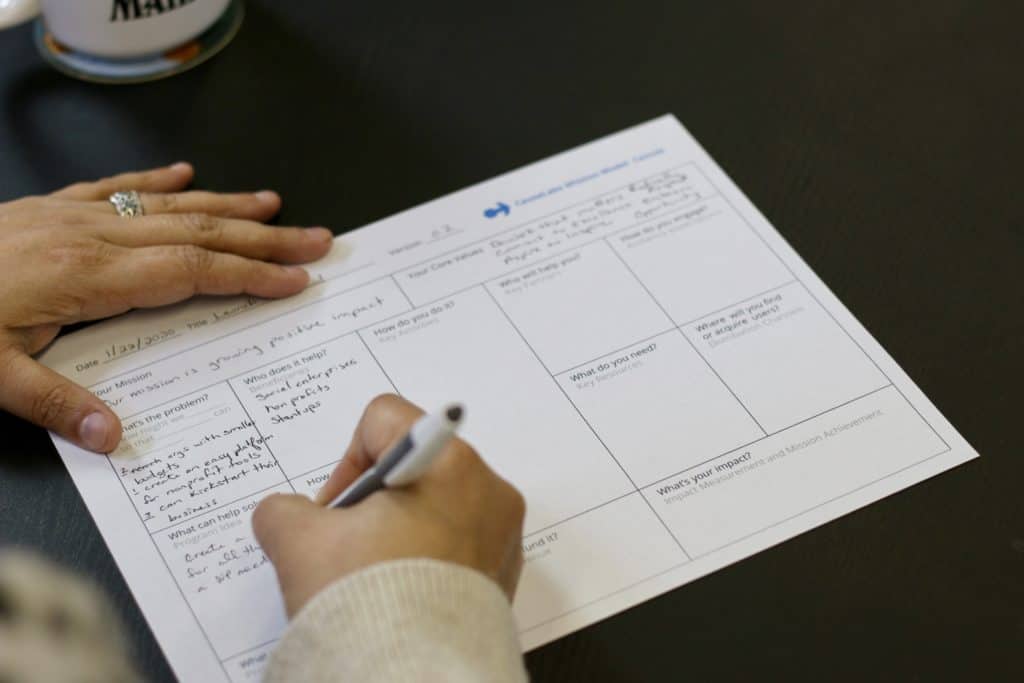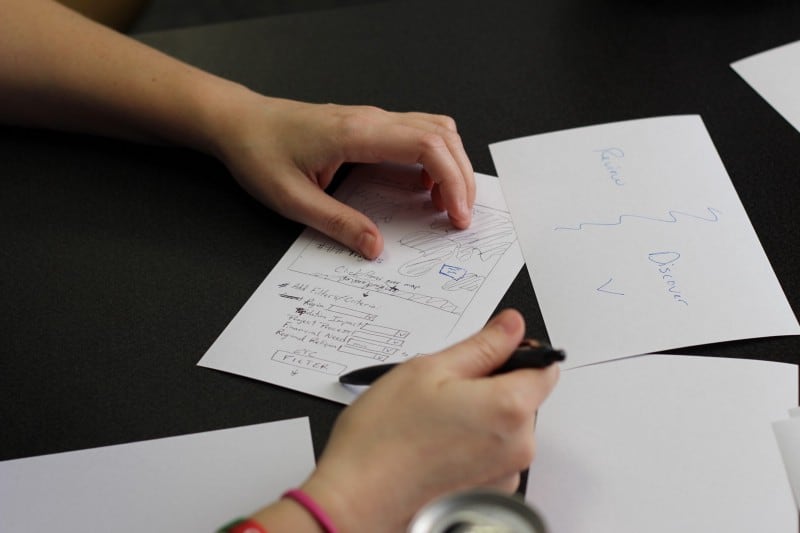Welcome to part two of our 5 part guide to the Mission Model Canvas worksheet. In part one, we gave an overview of the first three sections: (1) Start with a mission, (2) Have 3-5 core values, and (3) Define the problem your solution is aiming to solve. In this article, we will walk through the next three sections.
There is no prescribed way to continue filling in the blanks. You can go left to right, move top to bottom, or read all of the questions and randomly answer based on what’s well defined in your mind.
We’ll continue top to bottom from left to right for the two connected rows. Then, we’ll tackle the last row together, just as we did with the mission and values.
4. Write a potential solution.
Before you create a list of activities for what you’re going to do, first write down what you think can help solve the problem. The answer could be money, it could be access, it could be education, or it could be a specific product you want to develop. The solution that solves the problem may be indirectly related to your idea and the Key Activities you’ll perform.
For example, if money can help solve the problem, you may sell products as one of your Key Activities and then donate the profits. That is different from creating a product that actually serves the needs of the user experiencing the problem. It is also different from providing employment to increase their financial well-being. All are valid and worthy approaches to solving problems, but two are more geared towards solving the problem with money. The third solves a different problem.
This is why starting with the problem and the solution that can help solve the problem is essential. It helps validate and shape your idea so that you’re solving the right problem.

5. Identify who you will help.
In some cases, the people you list here are not your users. This is not always your target audience for marketing. This answer represents the people who experience the problem in the previous section. For example, you may identify that the root of the problem is transportation. The people you list here directly benefit from the product or program, but they may not be involved in the delivery of your product or service. Your Key Activities may be to raise money so that you can purchase a shuttle, or it may be to enlist people in car sharing.
This is not a question of who you’ll sell it to, how, or for how much. This question and the question beneath it (How does it help them?) keeps the problem statement relevant and gives your solution its purpose for existence.
The people you help may be your employees. An answer you may be more familiar with in corporate America is the shareholders. In reality, there is more than one group to be listed here. It can be a combination and likely will be a combination of different audiences benefitting at a variety of levels.
6. Be true to your cause. How will you make a difference?
How are you really helping the people you listed in the section above? Are they all experiencing the problem you listed? How will their lives be affected? This statement is similar to the last question on the Mission Model Canvas in that it focuses on impact. This section is asking how you plan to make a difference while the last part is about how much of a difference you will make.
In the next article, we will walk through the next three sections of the MMC: (7) List your key activities, (8) List your partners, and (9) answer “What do you need?”.

